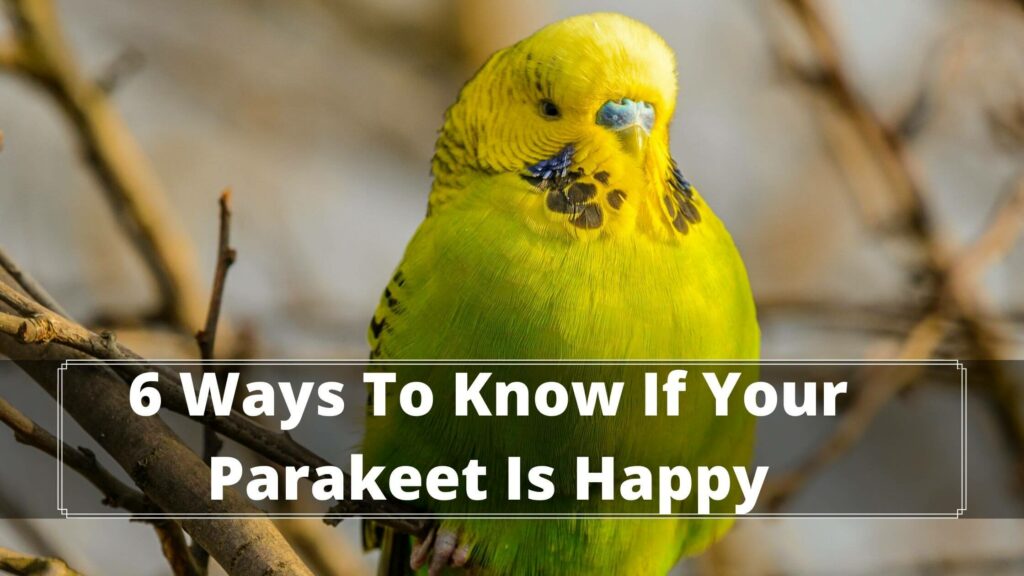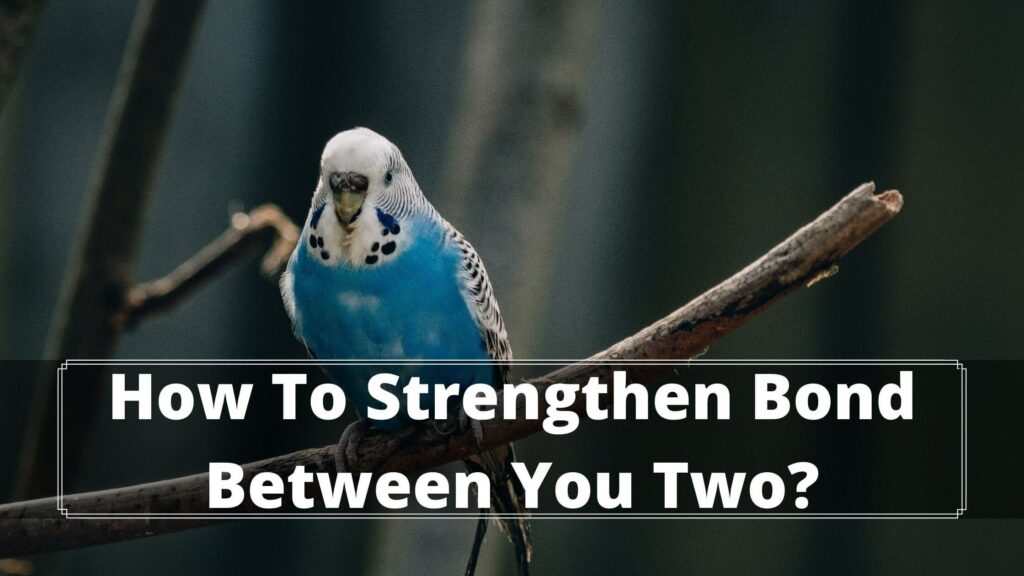
All birds communicate with different types of body language and sounds. Most pet birds can see expected behavior and pattern, including parakeets. You can tell a lot by observing a parakeet’s vocalization, tails, Wings, and other parts of its body. Here, we will talk about and learn how to know if your Parakeet is happy.
How Can I Tell if My Parakeet is Happy?

Parakeets speak in their way and express themselves through body language. You can learn a lot. It will appear subtle, especially if you are looking at a smaller parakeet, but the way it moves is very telling. Let’s talk about six ways or cues that indicate a happy Parakeet.
1. Twitching Its Wings
If a parakeet is continuously twitching its wing, it shows excitement. If the Parakeets are extremely happy, they will move a lot, even in a small way. When paired with other cues, a parakeet twitching its wing is comfortable with body language. A parakeet retreats away or screams when scared.
2. Head Tilting
When a parakeet is engaged or curious, they often tilt their head to one side or other. Not only does this behavior help the Parakeet get a better look, but it is also a fun way to move around. Curious parakeets are often considered active and Happy birds.
3. Standing On One Leg
If your Parakeet is standing on one leg, maybe it’s for comfort or warms up before bed. However, when a parakeet is upset, they usually prefer keeping both legs down.
4. Opening Its Wings Slightly
It is happy if your Parakeet often opens its wings slightly and straightens up at you whenever it sees you. Parakeets do this to look pretty and catch their owner’s attention, proving they are in a good mood.
If your Parakeet is slightly opening its wings or straightening up while looking at you, this is usually a happy sign. However, if your Parakeet holds its branch straight out and doesn’t fly, it could be a sign of aggression paired with another distressed body language. So, both behavior shouldn’t be confused with parakeets.
5. Head Bobbing
It is happy if a parakeet’s head is bobbing or the bird nods its head up and down. Head bobbing is considered a dancing move in parakeets. Here you can learn about why parakeets do head bobbing.
Head bobbing is also used by parakeets in the mating season to attract and form affection in female Parakeets.
6. Shaking Its Tongue
When a parakeet is enthusiastic and Happy, it will often open its mouth and wiggle its tongue. Parakeets express joy by shaking their tails at the same time.
3 Ways On How to Keep a Parakeet Happy
If you want to raise a well-mannered, happy parakeet, you need to provide it with the right environment and fulfill its needs. Parakeets are very easy to please as long as you have time to spare and spend with them. Let’s talk about how you can keep them happy.
1. Maintain A Clean Spacious Cage
Parakeets should never be kept full-time in the cage because a parakeet will spend most of its time in the cell. When parakeets sleep, eat, or when you are not home, keep an eye; their cage should be well clean.
The cage should be spacious enough for your Parakeet to be able to spread its wings and run around, but it is also equally important to maintain a good cleaning habit and schedule. I recommend you clean your parakeet cage at least once a week or more if possible.
2. Provide Perches & Toys
In the wild, parakeets explore a vast area that covers dozens of miles at a time. Therefore, keeping a parakeet in a large cage equipped with perches, swings, and toys is recommended. Birds like parakeets need continuous mental stimulation to stay active and happy.
It would help if you always tried getting the giant cage you can for a parakeet. If that’s not doable, you need to ensure that you let your Parakeet explore your home under your supervision. You can also let your parakeet perch on your shoulder as you go on your daily task. Here you can learn how to get a parakeet to sit on your shoulder.
3. Enrichment
Parakeet-like birds need a great deal of entertainment to stay happy and live lifelong. Always consider providing the following needs to your bird.
- Get them various types of colored, shaped, and textured toys.
- Always offer a variety of food to keep their mealtime interesting.
- To keep your Parakeet active and engaged, try puzzle toys. Puzzle toys are not only effective in providing environmental enrichment but also in decreasing abnormal behavior in birds too. Feather plucking and restless pacing are known as deviant behavior in parakeets.
- Equip the cage with swings and stairs.
- You can go with the bell toys that can be knocked around and pecked at. The cage should be equipped with multiple perches of different sizes and shapes at different levels.
How To Strengthen Bond Between You Two?

- Play Music & Sing To Them. Consider Singing With Your Parakeet. Playing the music that a parakeet likes helps a lot in bonding better. The Parakeet in the right place will build trust.
- Let Them Perch On You. Train Your Parakeet to come near you or sit on your shoulder as you go about your day. This keeps them happy and engaged.
- Dance With Them. Dancing with the Parakeet strengthens the bond between the two.
- Get A Companion. Providing a companion will help you a lot if you cannot spend constant time with your Parakeet.
- Hand Feeds Them. Hand feeding the Parakeet will strengthen your bond as well.
- Pet & Whistle To Them.
- Teach Them To Mimic New Words.
Interesting Further Reading
- How To Make A Parakeet Come To You? 7 Tricks
- How Much To Feed A Parakeet? Diet Guide in 2022
- Do Parakeets Like To Be Held ? 5 Dangers + 4 Safety Tips
Why Provide A Companion?
It is always recommended to get a companion for a parakeet if you don’t have enough constant time to spend with your Birds. If companions or any company constantly surrounds it, it is likely to be happy.
In the wild, parakeets are known to create flocks of up to 100 birds at a time. Providing a parakeet with a friend will help fulfill its social need and rule out loneliness. Let’s talk about signs of an unhappy parakeet as well.
Signs of unhappy Parakeet
If a parakeet regularly displays the side mentioned above, you can be sure it’s happy. There are few body language and science your character will exhibit in my work if it falls on the happy award.
- The Parakeet is not very active.
- Your Parakeet is refusing to eat.
- The Parakeet is not playing.
- Your pet bird is avoiding spending time with you.
- Your bird is not engaging with other cage mates.
- parakeet is displaying a sign of illness.
- A bird is doing abnormal behavior.

Hi, There and Welcome to BirdsNews.com, is here to help you learn and care about pet birds. and this blog is a journal of everything I’ve learned.
